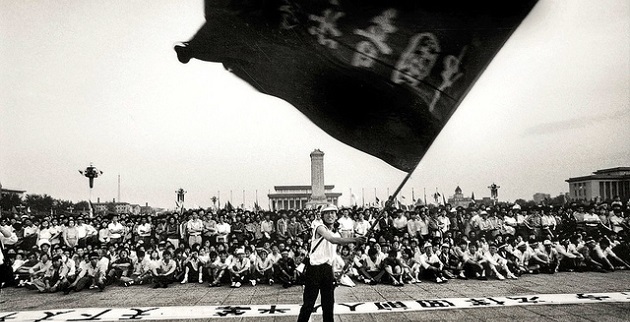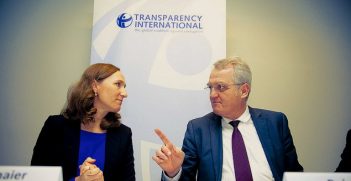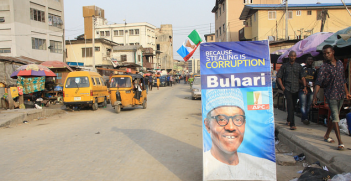Tiananmen: 25 Years On

A truthful accounting should help, not hinder, the realisation of a China that is stronger for the acknowledgment of its tragedies as well as its stunning achievements.
On the night of June 3-4 1989, units of the People’s Liberation Army entered Beijing killing some hundreds of ordinary Beijing citizens as they made their way to their objective, Tiananmen Square, the focal point of massive protests that had begun in late April following the death of former Party Secretary Hu Yaobang. The square was cleared of protestors. Further killings and arrests ensued over following days. A small number of soldiers were also killed. Protests in scores of other Chinese cities were simultaneously brought to an end, with varying degrees of violence. Significant protests in Shanghai were settled largely peacefully. Beijing was the worst. This much is known; although a final, credible death toll has not been published to this day.
The Build-Up
After the event Deng Xiaoping famously said ‘this storm was bound to happen’. Not necessarily. The country wide protests, against corruption, against rising prices, against an array of contradictions between what opening and reform seemed to promise and the realities of daily life, and yes, in the case of some, demands for greater freedom and democracy – these were almost certainly inevitable; but the bloody denouement in the nation’s capital was not. The crucial element here was a serious power struggle at the centre of China’s leadership, a struggle that was both exacerbated by, and in which the contending parties sought to use, the popular protests.
There were of course other, contingent, elements as well: the sensitive 70th anniversary of the May 4th Movement, the meeting of the Asian Development Bank, and, in particular, the historic visit of Mikhail Gorbachev, which made Beijing the focus of global media attention, quite apart from the events in the square – which also led to the humiliation for the government of having to cancel the official welcome at that site; and there were divisions amongst the student leaders and their supporters too, between those favouring a degree of accommodation with the authorities, with others more intransigent. But in the end it was the hard-liners in the government who won the power struggle, and who, backed by Deng Xiaoping, must take responsibility for the tragic way in which the protests were suppressed.
It was this same Deng, though, who also ensured that, against the clear inclinations of a number of those on the winning side, this did not mean turning back from the policies of opening and reform that he had himself initiated at the Third Plenum of the Eleventh Central Committee in late 1978. He understood, even if not all his colleagues did, that his own dictum that stability takes precedence over all else demanded that those processes, and the resultant economic growth, be pushed forward. The domestic and international shocks resulting from the events of June 1989 notwithstanding, his Southern Tour of 1992 unleashed the second wave of the process of opening and reform that has resulted in the China we see today, with unprecedented levels of prosperity, openness to the world, international standing and influence.
A Personal Perspective
For one who lived through and closely followed the events of 1989 in Beijing, it is at times hard to realise that a quarter of a century has now past, and that vast numbers of adult Chinese today were only children, or not even born, when those events took place. June 4 means little or nothing to many of them. At the same time, China, and Beijing, have changed beyond recognition, and in terms of people’s lives, in many ways for the better. Millions of Chinese travel overseas on holidays every year, and when the holidays are over, they return home with no greater reluctance than tourists of any other country. Their lives are not bad. They take pride in China’s global standing. For many Chinese, particularly intellectuals and students, the 1980s were a period of unalloyed admiration for the West, but this has been tempered not only by patriotic education and warnings of the dangers of peaceful evolution, but much more effectively by Western failures in Iraq and Afghanistan, the Asian Financial Crisis, the Global Financial Crisis, the negative examples and unmet policy challenges of the Arab Spring, Israel/Palestine, the Ukraine…the list goes on.
Of course China has huge problems and challenges of its own, some of which, such as pollution, result from its own successes, while others are more traditional, such as the corruption which now greatly exceeds that which was such an issue in 1989. But while ‘mass incidents’ resulting from particularly egregious and localised causes continue to take place across the country, the idea that the central leadership is vulnerable to challenge by mass protests in the heart of the nation seems inherently implausible. This is not what people want, and even if it were, the range of coercive means – lethal, and significantly, non-lethal – at the disposal of the authorities gives them a far greater degree of flexibility and effectiveness than was the case 25 years ago.
Continuing significance
And yet, those same authorities are worried. They have not forgotten what happened. Some of them are the direct or indirect beneficiaries of the power struggle that Zhao Ziyang lost and Li Peng won, resulting in the subsequent promotion of Jiang Zemin, still exercising at least some influence despite his advanced age. (It is perhaps noteworthy, though, that Xi Jinping’s father Xi Zhongxun honourably but fruitlessly opposed the decision to use the PLA.) Neither have millions of Beijing citizens who themselves lived through the events forgotten, whatever roles they played or didn’t play, and whatever they thought then or think now. Neither have the parents, siblings, relatives, teachers, friends, of those who died, and the greater numbers injured or imprisoned or exiled.
June 4, like it or not, is another of those dates, like March 18, May 4, May 30, September 18, and more, that have entered Chinese history, and as such demand an explanation. From time to time an official Chinese spokesperson says, usually responding to a journalist, that this issue has been settled years ago. It hasn’t. Were this the case, the date would not be as sensitive as it is. Every year in late May numbers of people associated with the events of 1989 are encouraged in one way or another to keep quiet, take a holiday, or something less pleasant. This year, a significant anniversary, has already seen a number of arrests, but also newer forms of activism, including a privately sponsored seminar and a series of messages on Weibo, China’s Twitter. The truth is, the issue is not going to go away, and the truth is…the truth. About what happened, and why.
One may fully understand the desire of the Chinese authorities, faced as they are with massive challenges, to avoid rancorous disputes and whatever runs the risk of undermining China’s hard-won stability and prosperity. One should wish them every success in their efforts to achieve their stated goals for the the ‘two centenaries’ (of the Party and of the People’s Republic of China), including moderate prosperity for all (2021) and democracy (2049). But sooner or later it should become clear that a truthful accounting should help, not hinder, the realisation of a China that is the stronger for the acknowledgment of its tragedies as well as its stunning achievements.
Some years ago, invited by two graduate students of my acquaintance from the PRC, I visited the February 28 Memorial Museum in Taipei. I had wondered whether they wished to remind me of the sins of the KMT (Kuomintang), but this was not their point. As we walked out, one of them said to me, ‘we wanted you to see this – the day we can take you to the June 4 Memorial Museum in Beijing, we’ll know our beloved Motherland has come of age.’*
Professor Richard Rigby is the Executive Director, ANU China Institute.
A shorter version of this piece is published on East Asia Forum.
*The February 28 incident occurred in 1947. Martial Law was lifted by President Chiang Ching-Kuo in 1987. The Executive Yuan promulgated a Research Report into the Incident in 1992. In 1995 President and KMT Chairman Lee Teng-Hui issued a formal apology and declared February 28 as an official day of commemoration for the victims. It took a long time.





